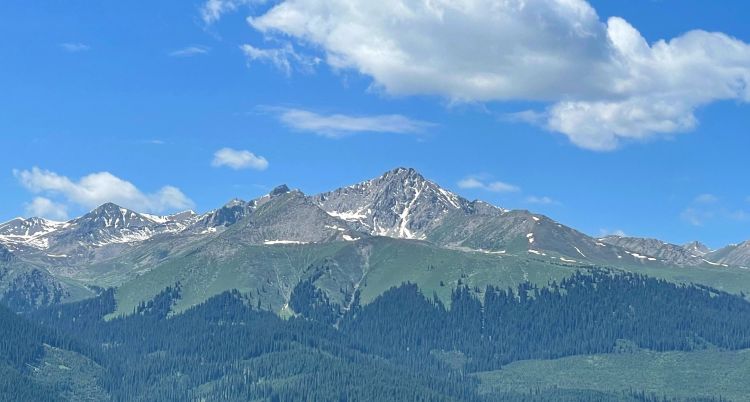Mountain treelines on the move in a warming world

Mountain treelines, which mark the upper limit for tree growth in high-altitude areas, are shifting as a result of climate change, say researchers.
The researchers, led by a scientist at the University of Leeds, used satellite images to develop an algorithm that detects nearly one million kilometres of closed-loop treelines across 243 mountain ranges.
Closed-loop treelines form rings around the upper slopes of mountains. They’re unlikely to have been affected by land use activity, so scientists can clearly identify the impacts of climate and climate change on them.
Shifting treelines
From 2000 to 2010, around 70% of these treelines moved upwards by an average of 1.2 metres per year. The fastest change was seen in the tropics, where the shift up the mountain was about 3.1 metres per year.
The averages for treeline change hide a wide variability in movement. In the mountains of Malawi, Papua New Guinea and Indonesia, some treelines were shifting upwards at the rate of 10 metres per year. In contrast, in temperate regions, some treelines showed a slight retreat, moving down mountains by around half a metre a year. Other treelines receded as a result of wildfires such as in the western US, where vegetation and climate create conditions for fire to take hold.
The study, titled “Global distribution and climatic controls of natural mountain treelines” has been published in the academic journal Global Change Biology.
Professor Dominick Spracklen from the School of Earth and Environment is a co-author of the study. He said: "Our study provides new evidence that the world's treelines are moving upwards in response to climate change.
“Previous studies have focused on individual treelines or mountain ranges. Our work provides a global picture of rapidly moving treelines in response to rising global temperatures. We found that treelines are moving upwards fastest in regions where temperature is the dominant control of treeline position. In temperate regions where rainfall is more important, treelines are not changing so fast."
Historic research shows that the movement of treelines began to accelerate after 1970, possibly because of escalating changes to the world’s climate.
Ecosystem disturbance
The dynamic nature of the changing treeline environment challenges the fragile ecosystems that exist at high altitudes.
Writing in the scientific journal Global Change Biology, the researchers say alpine species could face an increased risk of extinction, caught between encroaching forests and the inhospitable habitats at higher altitudes.
Xinyue He, a doctoral researcher who led the research project and works jointly at the University of Leeds and the Southern University of Science and Technology, said:
The plants and animals that exist at these high altitudes are very susceptible to environmental change. As treelines move up, they begin to compete for space and nutrients and that can cause some endemic species that survive at these locations to be squeezed out.
“This important research gives us an insight into how these vulnerable areas could be affected, and that gives us an opportunity to think about how we could intervene to try and safeguard some species.”
Global map of treeline cover
Using satellite images, the researchers were able to analyse what was happening to more than 27 million closed-loop treeline positions.
The treelines were distributed on every continent apart from Antarctica and ranged from a treeline elevation of 489 metres on the Khrebet Chayatyn Mountain in Khabarovsk, Russia, to 4,528 metres on the Ruwenzori Mountain range in eastern equatorial Africa.
The research has resulted in a global database of treeline distribution.
The paper can be downloaded from the Global Change Biology website.




